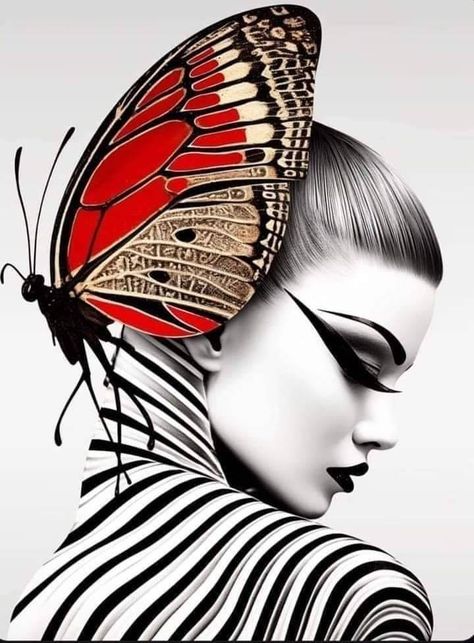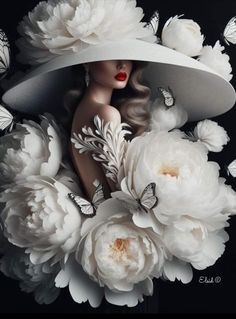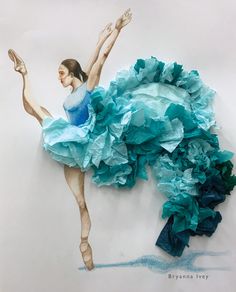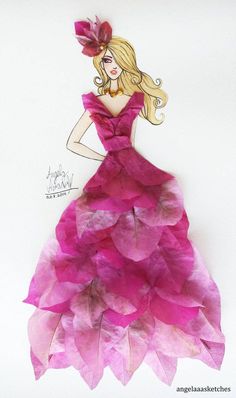3D Painting
3D painting with flowers is a unique art form that blends painting and the physical dimension of flowers to create striking and tactile artworks. Unlike traditional flat painting, 3D painting incorporates natural or artificial flowers, or even painted floral elements, to add depth, texture, and a sense of realism to the artwork. This technique allows artists to elevate a simple two-dimensional canvas into an interactive and immersive experience.
In this note, we will explore the materials needed, step-by-step instructions for creating a 3D floral painting, different techniques you can use, tips for achieving the best results, and the significance of this art form.

Why 3D Painting with Flowers?
- Textured and Dynamic: 3D painting with flowers allows you to introduce texture and depth into your artwork, making it more visually dynamic and engaging.
- Blending Nature and Art: Incorporating real or artificial flowers bridges the gap between nature and artistic expression. It brings the beauty of nature into an artistic composition in a more literal sense.
- Personal and Unique: Each artwork is unique because of the organic nature of flowers. Whether using real flowers or creating raised floral designs with paint, the result is a personal, one-of-a-kind piece of art.
- Multi-Sensory Appeal: In addition to being visually appealing, 3D flower art can be tactile, inviting viewers to touch and explore the layers of the painting.
Materials Needed:
To create a 3D painting with flowers, you’ll need the following materials:
- Canvas or Wooden Panel: A sturdy surface is recommended since you’ll be adding materials like flowers, which can weigh down a lighter canvas.
- Acrylic Paints or Oil Paints: These work best for 3D painting due to their thick consistency and ability to hold texture.
- Palette Knives or Brushes: For creating textured paint strokes and building layers.
- Flowers: You can use real, dried, or artificial flowers depending on the longevity you want for your artwork.
- Heavy Gel Medium or Modeling Paste: This is used to create textured, raised surfaces that can hold the flowers in place or simulate floral shapes directly on the canvas.
- Adhesive: For securing the flowers onto the painting. A strong glue, such as hot glue or a special fabric adhesive, works well for this purpose.
- Clear Varnish or Resin (Optional): To seal and protect the artwork, especially if using real flowers.
- Decorative Materials (Optional): You can add elements like beads, glitter, or leaves to enhance the 3D floral effect.
- Tweezers or Scissors: For precise placement and trimming of flowers.

Step-by-Step Guide:
- Prepare the Canvas:
- Start with a pre-primed canvas or a wooden panel. If you’re using a wooden surface, you may want to apply gesso (a type of primer) to create a smooth surface for painting.
- Plan your design by sketching lightly with a pencil. This will help guide the placement of the flowers and ensure balance in the composition.
- Paint the Background:
- Use acrylic or oil paints to create a base layer for the painting. This can be anything from a simple color wash to a detailed scene that complements the floral elements you plan to add.
- Consider using colors that will contrast with the flowers so they stand out, or use complementary colors for a more harmonious feel.
- Add Texture with Modeling Paste:
- Apply modeling paste or a heavy gel medium to the areas where you want to create a raised, 3D effect. This can be done using a palette knife for thick, bold strokes or brushes for more detailed textures.
- You can sculpt the modeling paste into flower shapes, petals, or leaves, or simply use it to create abstract textures that enhance the depth of the painting.
- Prepare the Flowers:
- If you’re using real flowers, it’s best to dry them first by pressing them or using silica gel to preserve their natural shape.
- Artificial flowers are easier to work with and will maintain their shape over time.
- For painted 3D flowers, use modeling paste or thick layers of paint to sculpt floral shapes directly on the canvas. You can layer colors over them once the paste dries to add detail.
- Attach the Flowers to the Canvas:
- Arrange your flowers on the canvas according to your design. You may want to start by placing them loosely on the surface before committing to their position.
- Secure the flowers using a strong adhesive. Hot glue is commonly used for artificial flowers, while fabric glue or craft glue may work better for real or dried flowers.
- For larger flowers, you may need to hold them in place until the adhesive sets, or use a heavier medium like modeling paste to embed the flowers directly into the artwork.
- Add Paint Details:
- Once the flowers are in place, use your paints to blend them into the canvas. You can paint stems, leaves, and additional floral details to make the flowers appear as though they are naturally part of the scene.
- Use shading and highlights to enhance the 3D effect, making the flowers appear to pop off the canvas.
- Optional Additions:
- You can add further embellishments such as glitter, beads, or small decorative elements to enhance the texture and beauty of the painting.
- Consider adding thin layers of fabric or lace for a soft touch that complements the floral design.
- Sealing the Artwork:
- If you’ve used real flowers, it’s essential to protect them from environmental damage. Apply a clear varnish or a layer of resin to seal the flowers in place and preserve their color.
- For artificial flowers, varnish or resin is optional but can add a professional finish and protect the painting over time.
Techniques for 3D Flower Painting:

- Layering:
- Layering is key to achieving depth in 3D flower painting. You can build layers of modeling paste, gel medium, or thick paint to create different levels of the artwork.
- Flowers can be layered over textured paint to give the impression that they are emerging from the background.
- Textured Brush Strokes:
- Use thick brushstrokes and heavy paint to mimic the texture of flower petals or leaves. You can combine this with real flowers or artificial flowers to enhance the tactile feel of the painting.
- Impasto Technique:
- The impasto technique involves applying paint thickly to the canvas, often with a palette knife, so that it stands out in relief. This can be used to create raised petals, leaves, or even abstract flower shapes.
- Collage Technique:
- You can incorporate fabric, paper, or lace to add texture alongside the flowers. This mixed-media approach allows for more creative freedom and an even more pronounced 3D effect.
Tips for Successful 3D Floral Painting:
- Plan Your Composition: Before starting, visualize how you want the flowers to interact with the painted background. Use sketches to map out your design.
- Balance Between 2D and 3D: The 2D painting and the 3D floral elements should complement each other. Ensure the flowers do not overwhelm the painting but add to its overall composition.
- Experiment with Color: Use contrasting colors to make the flowers stand out, or blend them into the background for a subtler effect.
- Care for Your Artwork: If using real flowers, keep the painting in a dry place, away from direct sunlight, to prevent the flowers from deteriorating over time.
Significance of 3D Flower Painting:
- Enhanced Visual Impact: By adding a physical element like flowers, the artwork becomes more engaging and stands out in any space.
- Blurring the Line Between Art and Nature: 3D flower painting creates a bridge between the natural world and human-made art, making it a celebration of both creativity and nature’s beauty.
- Sustainability: Using dried or preserved flowers allows artists to repurpose natural elements in their work, contributing to sustainable art practices.
Conclusion:

3D painting with flowers is an innovative and captivating technique that adds dimension, texture, and a natural element to traditional painting. Whether using real, artificial, or painted flowers, this method allows for endless creativity and results in stunning, interactive artworks.
